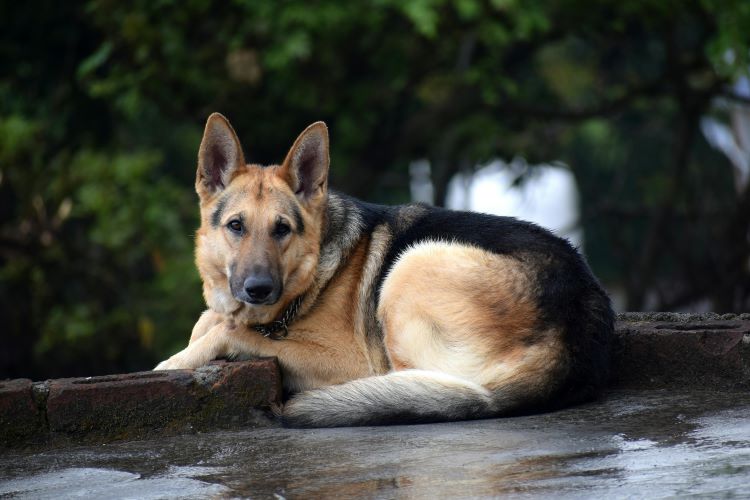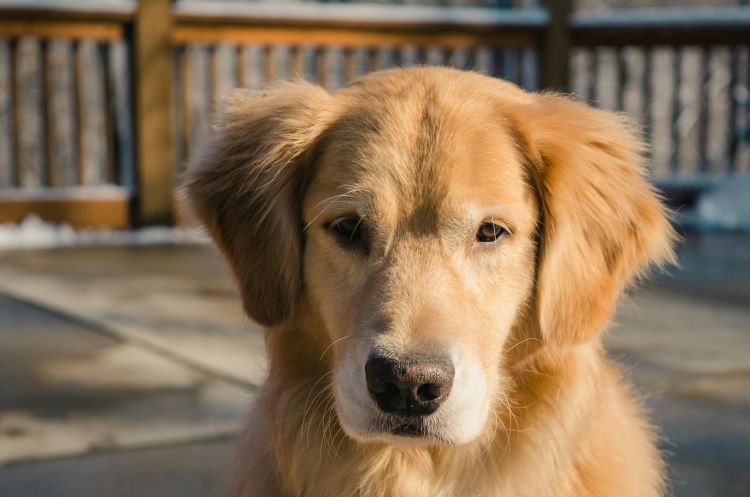Ready to help treat your pet to a healthy life?
Is Your Dog at Risk of Hip Dysplasia? What it is & Affected Breeds
By : Kathleen Crampton | Published Jul 8, 2025

Nobody likes to think about a serious condition affecting their dog, whether now or in the future. Nevertheless, learning about your pet and whether they’re predisposed to certain health issues is important for keeping them healthy over time. Whether you’ve only just heard of hip dysplasia or it’s a risk your pet’s veterinarian has been mentioning for years, it’s one condition that all dog owners should have at least a basic understanding of.
While all dogs can get hip dysplasia, some are more at risk than others. Find out if you need to be on the lookout for this condition in your pup by understanding what hip dysplasia in dogs looks like, breeds that are more likely to develop it, and how to help your pet live as pain-free a life as possible.
What is hip dysplasia?
Canine hip dysplasia is an orthopedic condition in which the hip joint is loose, creating instability and misalignment and ultimately leading to the degeneration of the area over time. Eventually, this can lead to severe inflammation and arthritis, causing intense pain and limiting mobility. This condition can affect people too, but it is more commonly associated with dogs since it is so prevalent among different breeds.
Even though hip dysplasia is commonly seen as a condition older dogs get, the onset of this condition typically occurs during puppyhood. As a dog grows, sometimes the hip joint develops improperly, where the head of the femur (the ball) doesn’t sit snugly in the hip socket. A normally developed hip joint moves smoothly, but when it’s loose, the ball grinds against the socket when the dog’s hind legs move. This wears away the bone over time, potentially causing the aforementioned mobility issues, pain, and discomfort.
Signs of hip dysplasia in dogs
Only your veterinarian can diagnose hip dysplasia in your pet for sure. However, it is a good idea to become familiar with the signs that something is wrong. Hip dysplasia in dogs can present differently from pet to pet (and also vary depending on the condition’s severity), but common signs include:
- Bunny-hopping gait
- Limping
- Not able to climb stairs
- Difficulty getting up from the floor
- Unable to exercise or play for significant periods of time
- Lameness after exercising
- Shifting weight to their front legs
- Favoring one hind leg over the other
- Pain when their hip area is touched
Most dogs, even breeds that are genetically predisposed, usually won’t show any physical signs of hip dysplasia until later in life, but some may display signs at just a few weeks old. As with many degenerative joint issues, canine hip dysplasia symptoms progress with age, so if your dog is affected by the condition, it’s common to notice more physical issues as they get older.

Dog breeds at higher risk of hip dysplasia
While any dog can develop hip dysplasia, certain breeds are more prone than others, such as large and medium-size breeds. It’s helpful to be aware of the types of dogs at risk of hip dysplasia so that pet parents can be proactive in mitigating and treating the condition.
Keep in mind that every dog is unique, and exercise, diet, weight, and environmental factors can also influence whether they develop or show signs of hip dysplasia. Here’s a rundown of eight dog breeds (in no specific order) where hip dysplasia is particularly prevalent.
1. German Shepherd
German Shepherds are often considered the “poster child” of canine hip dysplasia, with approximately 20% of the breed getting the condition at some point in their life. Although the breed is genetically predisposed, it’s crucial for pet parents to not over-exercise their German Shepherd while their bone plates are growing (usually until about 12-18 months old), as doing so can exacerbate the hip joint.
2. Pug
When thinking about health risks for Pugs, commonly known issues like breathing difficulties and hanging tongue might come to mind. But hip dysplasia is also a risk factor for this breed. It’s important to keep an eye out for signs of the condition to make sure that your Pug lives a long, pain-free life.
3. French Bulldog
You might be surprised to find another small breed on this list, but French Bulldogs have also been known to experience hip dysplasia. Because this is a hereditary trait, many breeders of Frenchies conduct testing to keep future litters from inheriting it.
4. Golden Retriever
These lovable, goofy pups can develop several health issues that are common to the breed, including both hip and elbow dysplasia. Joint problems are prevalent among Golden Retrievers, especially as they get older, so proper care is paramount.
5. Rottweiler
This large-size breed needs a good amount of exercise to stay physically and mentally engaged, but pet parents should be cognizant of their Rottweiler’s potential for developing hip dysplasia. Too much exercise, or exercising too long, may not be healthy for their hip joints. It's important to talk with your veterinarian about helping your Rottweiler maintain a healthy balance of activity and safety in their life.
6. Newfoundland
According to the Orthopedic Foundation for Animals, about 25% of Newfoundlands studied develop hip dysplasia. This breed is genetically predisposed to the condition, but it can also be exacerbated by fast weight gain as they grow into their very large size. Some tips for pet parents include weight management starting in puppyhood and protecting them from movements that can negatively affect their hips, like jumping down from the car.
7. Great Dane
These gentle giants are known to be predisposed to several health issues, some of which are attributed to their large size. Great Danes’ extra-large frames are susceptible to joint issues like hip dysplasia, especially later on in their life.
8. Basset Hound
Basset Hounds also have high instances of hip dysplasia. Although they have small frames, the interesting shape and structure of their limbs may make them more prone to developing joint issues.
Treatment options
In affected breeds, prevalence of canine hip dysplasia can be up to 71%, meaning that the probability of these specific breeds developing the condition can be quite high. But even with high risk factors for some dogs, early diagnosis and the right hip dysplasia treatment plan can set up these furry pals for a healthy, happy life. The good news is that with proper treatment and ongoing management, about 75% of dogs with the condition are able to maintain function and live quality lives.
If you’re concerned that your dog has hip dysplasia, take them to the veterinarian, who can perform a hip radiograph to determine if your dog does indeed have a loose hip joint. Once they know how extensive the issue is, they’ll provide treatment options, which might include pain medication, nutritional supplements, a food and exercise plan to get your dog to a healthier weight, rehabilitative therapy, or, in more severe cases, surgery.

How to protect dogs against hip dysplasia
Every dog parent — no matter if you have a dog breed likely to get hip dysplasia — should work with a veterinarian to ensure:
- A healthy weight — Provide the recommended amount of food (not too much, not too little) for your pup at mealtimes. Maintaining a healthy weight in dogs is one of the keys to preventing joint issues, or at least minimizing the effects of hip dysplasia.
- The right amount of exercise — From puppyhood through adulthood, dogs should be exercised according to their breed. Over-exercising can negatively impact growing joints in puppies.
- Proper nutrient intake — The right nutrients can support healthy joints. Your veterinarian can recommend specific kibble or supplements that are formulated with your pup’s health in mind.
You can also protect your furry companion with dog insurance, which provides coverage for many hereditary conditions as well as other new injuries and illnesses. A dog insurance policy supports both you and your pet, helping to cover the cost of keeping your dog healthy and thriving.
Learn more about how pet insurance can cover hip dysplasia and other common conditions.
